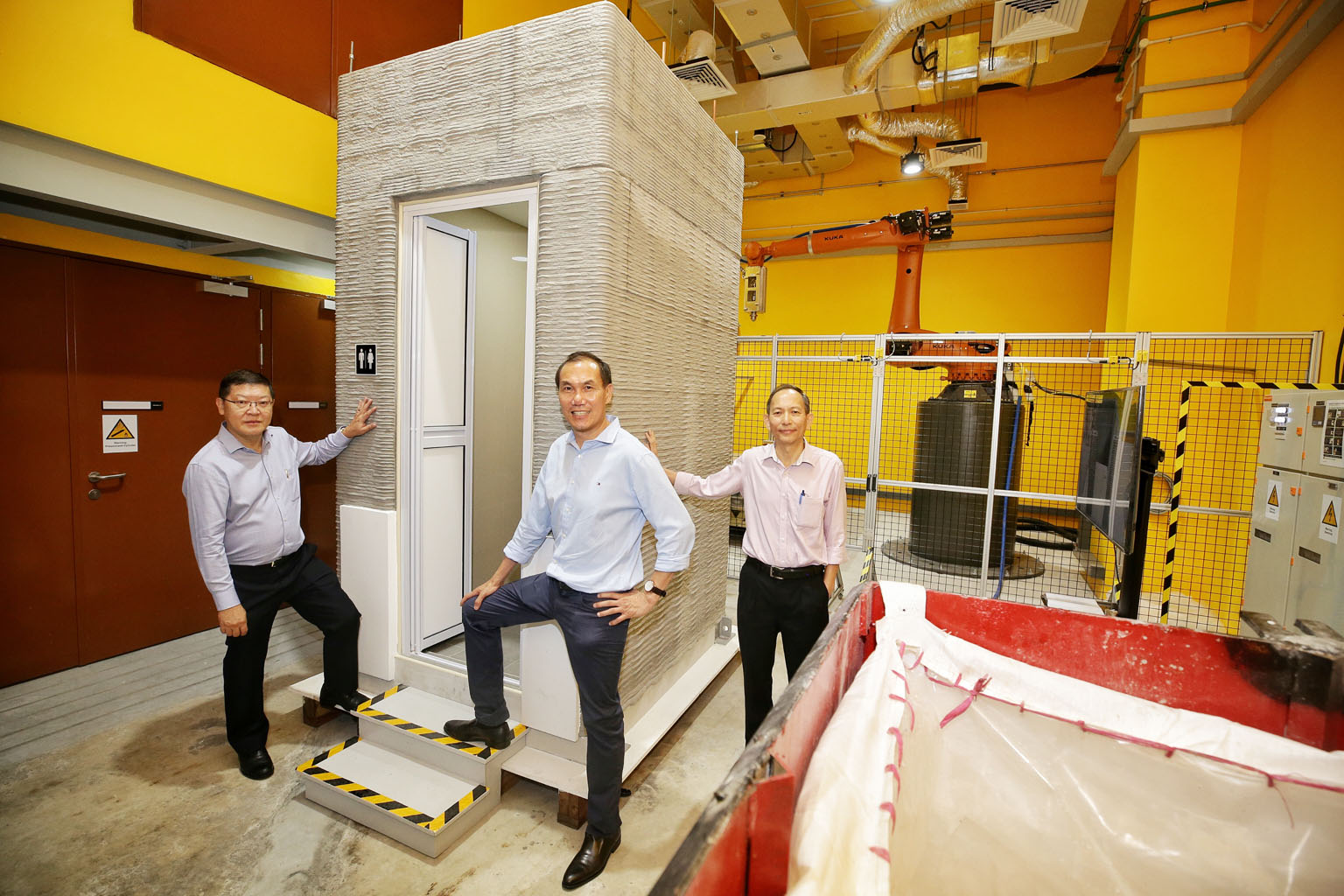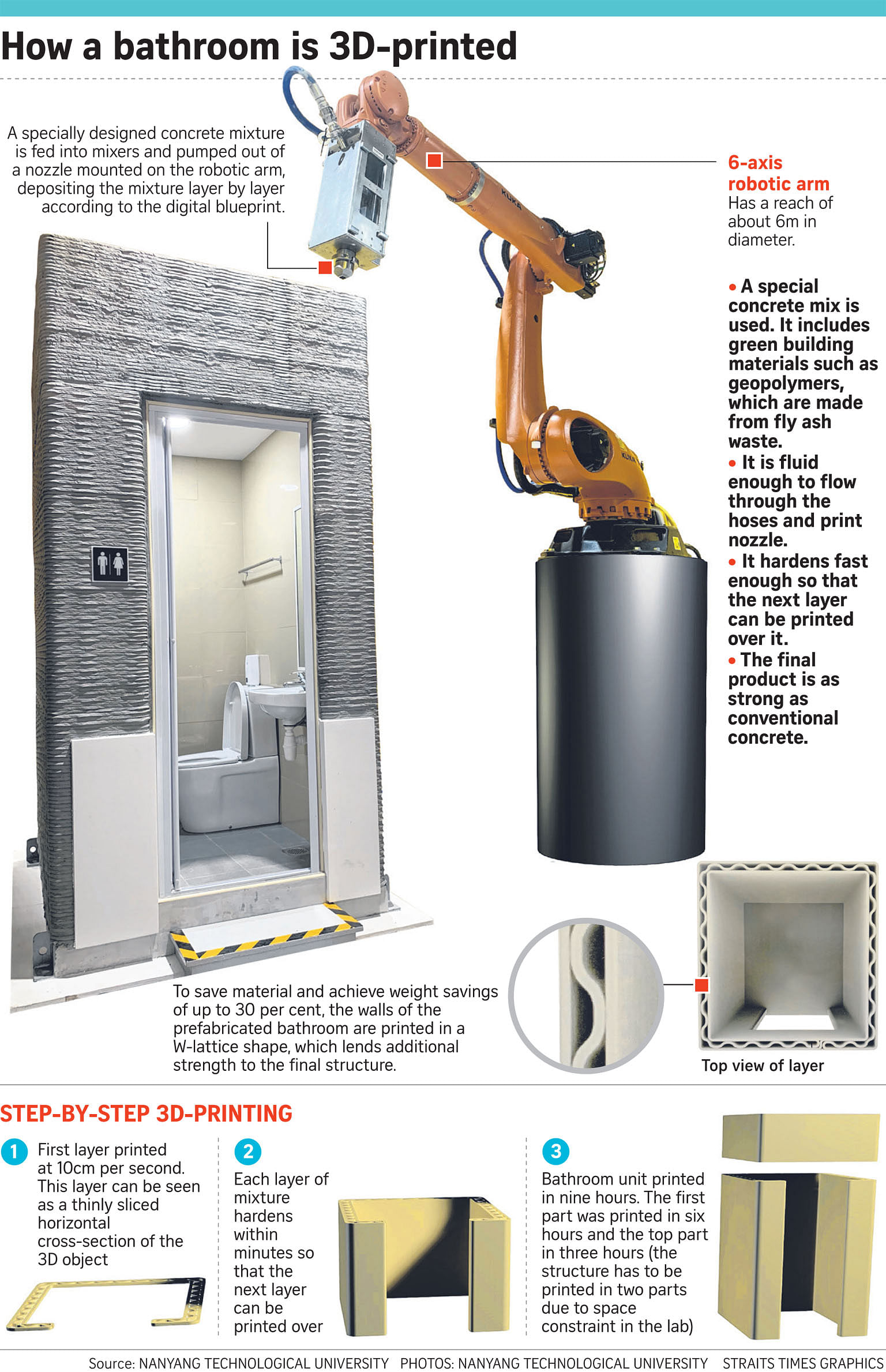NTU robot can print bathroom in 9 hours
Scientists say world's first 3D-printed loos are faster, cheaper to make than prefab units
Sign up now: Get ST's newsletters delivered to your inbox

(From left) Mr Lie Liong Tjen from Sembcorp Design and Construction, and Sembcorp Architects & Engineers, with Nanyang Technological University's Associate Professor Tan Ming Jen and Associate Professor Wong Teck Neng.
ST PHOTO: KEVIN LIM
Follow topic:
Bathrooms for housing units may one day be built more quickly and cheaply by using 3D printing.
Researchers at Nanyang Technological University (NTU) say they have created the world's first 3D-printed unfurnished bathrooms.
A large robot took just nine hours to 3D print an unfurnished bathroom measuring 1.6m by 1.5m by 2.8m, and 12 hours for another one more than twice that size.
The process took about half the time currently needed to build a prefabricated bathroom using concrete casting. It took five more days to add features such as drains, piping, tiles, sinks and toilets.
Typically, prefab bathrooms cost up to $7,000 to make, but the researchers say a 3D-printed one could cost around half as much.
Since 2014, new non-landed residential Government Land Sale sites - such as Housing Board estates and some condominiums - have used prefab bathrooms which are constructed in factories and assembled on site.

Speaking at NTU's School of Mechanical and Aerospace Engineering on Tuesday, Associate Professor Tan Ming Jen said 3D-printing a bathroom unit could also lower transport costs, carbon emissions and wastage, and improve safety.
"Companies can save inventory and manpower costs as they don't have to hold as much stock and workers can be redeployed to higher-level tasks," said Prof Tan, who leads the NTU team.
The technology was developed by scientists from NTU's Singapore Centre for 3D Printing, in partnership with Sembcorp Design and Construction, and Sembcorp Architects & Engineers.
Building a bathroom is the longest, most complex and manpower-heavy process of building a housing unit. Bathrooms need tiling, waterproofing, plumbing, electrical wiring and fixtures, while other rooms mainly require wiring.
Over three years, the NTU scientists developed four special concrete mixtures suitable for 3D printing. They used materials such as sand, cement and leftover ash from Sembcorp's coal power plant.
The final mix is fluid enough to flow through hoses and out of the robot's printing nozzle. It takes a few minutes to set, after which the next layer can be printed over it.
To save material and make the bathroom lighter than a conventional prefab one, the walls are latticed, strengthening the structure. Pipes and wires are fitted in empty spaces, so no drilling is needed.
The bathrooms, printed last September, are now undergoing tests.
The team hopes to commercialise the technology through licensing or by launching a spin-off company.

